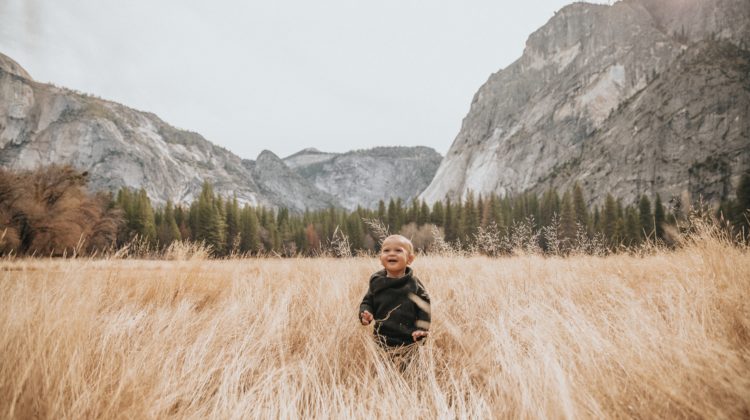
Times have changed and so have our children. It’s more important than ever to teach kids to care for the environment. You, like me, might have spent your childhood playing in the trees, running around your yard, swimming, and experiencing nature. It’s the reason why many of us have a love of nature and feel a sense of custodianship for it. This isn’t the case for most of our children. Growing up indoors with technology means their connection to nature, to the environment, is either weak or non-existent. Many parents are concerned with this, and we wonder how they will learn to take care of nature if they have no personal connection with it? If you’re one of these parents, don’t be dismayed. There are ways we can cultivate that same love of nature we have in our children. This article will explain how you can start this journey with your children.
Start with Why
Simon Sinek’s Golden Circle principles is not only a world-renowned TED talk about great leaders. It holds answers to this problem quickly, effectively, and clearly communicating the value of nature to children. You see, most people don’t focus on teaching kids why nature is so important and why we need to take care of it. Teachers and parents focus on what we should do to look after our environment. Why is far more important. And each person’s why is different.
Why Protect Nature?
Every child has a different idea about what nature is. Take time to find out what your child believes about nature. Ask them questions like these:
“What is nature?”
“What do you think about nature?”
Then head to the big why questions:
“Why should we take care of nature?”
“Why is nature so important?”
How Can We Protect the Environment?
Once you’ve had a chance to establish where your child stands on their ideas of nature, then you can start brainstorming ways they can get involved in protecting it. Remember, these should be simple ways your child wants to get involved in the process. They need to own the actions and take responsibility for implementing them. All you should do is prompt them by directing them to the correct resources. For example, researching recycling facilities near you on the internet. Here are questions to ask in this phase:
“How can you start taking care of nature?”
“How can we find out more about how to do this?”
Keep it Practical
Children learn through practical application and experience, just like most of us as adults. Get them out there doing something as soon as you can. This way, you can gauge their interest and change course if they’re losing interest. Here’s how you can keep them engaged.
Set a good example as a parent so children can copy your actions
Children model everything you do. The best way to teach kids to care about the environment is to do it yourself. You don’t need to know the science behind (mirror neurons for the curious). You just need to believe it. So, it’s a good idea that you become aware of your actions, habits, and behaviors.
Let me give you an example. Diapers were a serious debate in our household. I’ve done a ton of research on organic vs ordinary diapers. As my daughter gets older, I’m starting to teach her about the diapers that she wears. I make a point to dispose of them in the most environmentally friendly way. I let my daughter watch this, and sometimes, even involve her in the tidying up process. Diapers land up in landfills, polluting the environment. There are better ways to dispose of them.
Relate Nature to their Personal World
Start with their own interests. Take these interests and work them back to natural principles, the laws that govern our reality. Gravity is a natural principle. Then, use these principles to show them that nature operates in the same way.
Here’s an example. If your kids love playing video games where someone has to level up, show them how it happens in the natural world; how only the most successful birds, animals and creatures survive in the world. Don’t worry about finding the right names for these natural principles, the concept is enough for your children.
Incorporating Nature into their Day
Now that you’ve discovered your child’s interests, find ways of working little moments of natural appreciation into their day. Ask yourself, “How can we incorporate nature into my child’s interests?”
The opportunities are endless, but you’ll need to be creative. Here are a few examples.
Include their ideas into your plans
When you include a child’s ideas into the plans you’re making, you increase their engagement. Every child has a favorite toy. They own it. It can be the same with their ideas. When you include their ideas, they become more connected to the process. So, ask them for ways that your family can be more environmentally friendly in what you do.
Make it a Habit
Another way to teach kids to care for the environment is to make it a habit. I take my daughter every weekend to a place where I dispose of bottles, separating the metal from ones made out of plastic or glass. I’ve started explaining to her why I do that and by going weekly I create a habit out of it. Habits are the foundation for our actions. It’s important to create effective habits for our children.
Acknowledge their Efforts
Most people don’t give up because they’re not good. They give up because their energy went elsewhere. To keep a child’s energy on this journey of becoming environmentally aware, it’s important to acknowledge the work that they’re doing. For every action that they take that will somehow aid the environment, celebrate their efforts. Let them know how important it is that they’re playing their part. Tell them the story of the girl and the shore riddled with starfish. All efforts create change. No matter how small. If you’re looking for more ideas about how to get them into nature, you can read another one of my articles on getting your kids into nature.
Wrap up
Every child can learn to care for the environment. All we need to do is find their unique way of appreciating it. Imagine that there’s a door. Behind this door is the unbridled appreciation of nature. As parents, we’re responsible for helping our children find this door that is unique to them. We’re responsible for encouraging them to open it and acknowledging them for walking through. The rest is up to them.

Leave a Reply
You must be logged in to post a comment.